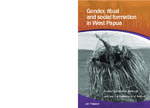Gender, ritual and social formation in West Papua; A configurational analysis comparing Kamoro and Asmat
Abstract
This study, based on a lifelong involvement with New Guinea, compares the culture of the Kamoro (18,000 people) with that of their eastern neighbours, the Asmat (40,000), both living on the south coast of West Papua, Indonesia. The comparison, showing substantial differences as well as striking similarities, contributes to a deeper understanding of both cultures. Part I looks at Kamoro society and culture through the window of its ritual cycle, framed by gender. Part II widens the view, offering in a comparative fashion a more detailed analysis of the socio-political and cosmo-mythological setting of the Kamoro and the Asmat rituals. Next is a systematic comparison of the rituals. The comparison includes a cross-cultural, structural analysis of relevant myths.
This publication is of interest to scholars and students in Oceanic studies and those drawn to the comparative study of cultures.
Jan Pouwer (1924) started his career as a government anthropologist in West New Guinea in the 1950s and 1960s, with periods of intensive fieldwork, in particular among the Kamoro. A distinguished anthropologist, he held professorships at universities around the world.
Keywords
indonesia; papua culture; oceanic studies; anthropology; gender studies; Asmat people; Canoe; Headhunting; Kamoro; Kamoro language; SagoDOI
10.26530/OAPEN_353252ISBN
9789004253728OCN
1030814017; 808384659Publisher
BrillPublisher website
https://brill.com/Publication date and place
Leiden - Boston, 2010Series
Verhandelingen van het Koninklijk Instituut voor Taal-, Land- en Volkenkunde, 258Classification
Politics and government


 Download
Download Web Shop
Web Shop